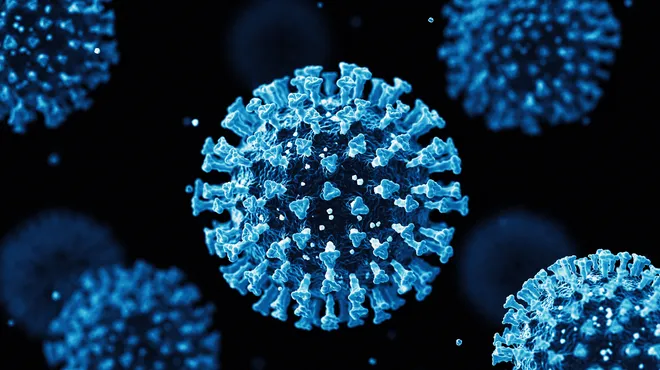As the COVID-19 pandemic continues to evolve, the possibility of reinfection is something that more and more people are encountering. With new variants emerging and immunity from previous infections or vaccinations potentially waning, understanding the symptoms and implications of a COVID-19 reinfection is crucial. Here’s what to expect if you find yourself reinfected this fall, along with tips on how to manage your symptoms and protect those around you.

Reinfection: What Does It Mean?
COVID-19 reinfection occurs when a person who has previously recovered from the virus contracts it again. Reinfections have become increasingly common due to the emergence of new variants that may partially evade the immunity developed from previous infections or vaccinations. While initial infections were often associated with severe symptoms, especially in unvaccinated individuals, reinfections can present a different set of challenges.
Common Symptoms of COVID-19 Reinfection
The symptoms of a COVID-19 reinfection can vary widely depending on several factors, including the variant involved, the individual’s vaccination status, and their overall health. Here are some symptoms to watch for this fall:
- Fatigue: Fatigue is one of the most common symptoms of COVID-19 reinfection. Even if you experienced mild symptoms during your first infection, reinfection can bring about a deep sense of tiredness that may linger for weeks.
- Cough: A persistent cough is another common symptom. This cough may be dry or produce phlegm, and it can last for an extended period.
- Shortness of Breath: Shortness of breath can be more pronounced in reinfections, especially in individuals with underlying health conditions. It’s important to monitor this symptom and seek medical advice if it worsens.
- Sore Throat: A sore throat can be an early sign of reinfection, often accompanying other symptoms like a runny nose or congestion.
- Headache and Muscle Aches: Headaches and muscle aches are frequent symptoms during reinfection. These can range from mild to severe, impacting your daily activities.
- Loss of Taste or Smell: While less common with newer variants, some individuals may still experience a temporary loss of taste or smell during reinfection.
- Fever and Chills: A low-grade fever, often accompanied by chills, can occur during reinfection. However, high fevers are less common in reinfections compared to initial infections.
- Gastrointestinal Symptoms: Nausea, vomiting, and diarrhea have been reported in some cases of reinfection, particularly with certain variants.
How Reinfections Differ from Initial Infections
Reinfections are not necessarily more severe than the initial infection, especially in vaccinated individuals. However, the body’s immune response may cause symptoms to vary. For example, your body may recognize the virus more quickly, leading to milder symptoms. On the other hand, some people might experience what is known as “long COVID,” where symptoms persist for weeks or even months after the initial infection has cleared.
Risk Factors for Reinfection
Several factors can increase the risk of COVID-19 reinfection:
- New Variants: Emerging variants may partially evade immunity, increasing the likelihood of reinfection.
- Declining Immunity: Over time, immunity from vaccines or previous infections can wane, making reinfection more likely.
- Underlying Health Conditions: Individuals with conditions such as diabetes, heart disease, or compromised immune systems may be at higher risk for reinfection.
Protecting Yourself and Others
To reduce the risk of reinfection and protect others, consider the following precautions:
- Stay Up to Date on Vaccinations: Receiving the latest COVID-19 vaccines can boost your immunity and reduce the severity of symptoms if you do get reinfected.
- Practice Good Hygiene: Regular handwashing, wearing masks in crowded places, and avoiding close contact with sick individuals can help prevent reinfection.
- Monitor Your Health: If you experience symptoms of COVID-19, even if they seem mild, get tested and follow public health guidelines to prevent spreading the virus to others.
What to Do If You Get Reinfected
If you suspect you’ve been reinfected with COVID-19, it’s important to take immediate action:
- Isolate Yourself: Isolate from others to prevent spreading the virus.
- Seek Medical Advice: Consult with a healthcare provider to assess your symptoms and determine the best course of treatment.
- Rest and Hydrate: Rest is crucial for recovery. Ensure you stay hydrated and follow a healthy diet to support your immune system.
COVID-19 reinfections are a reality we must navigate as we move forward in the pandemic. By understanding the symptoms and taking appropriate precautions, you can protect yourself and those around you this fall. Stay informed, stay safe, and prioritize your health.
For more insights on health and wellness, check out our latest News on Digital Digest.




